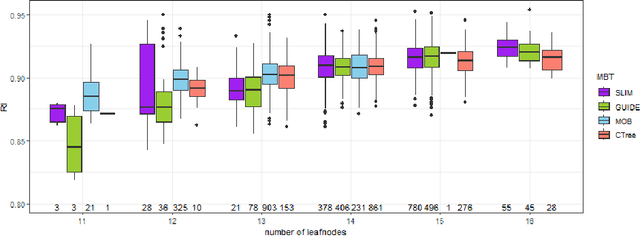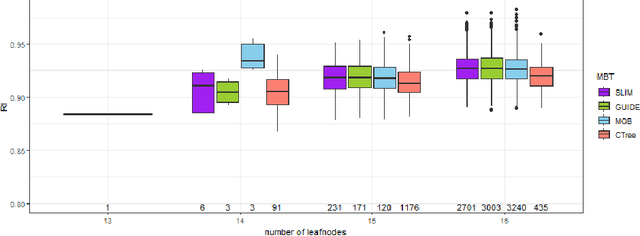Leveraging Model-based Trees as Interpretable Surrogate Models for Model Distillation
Paper and Code
Oct 04, 2023



Surrogate models play a crucial role in retrospectively interpreting complex and powerful black box machine learning models via model distillation. This paper focuses on using model-based trees as surrogate models which partition the feature space into interpretable regions via decision rules. Within each region, interpretable models based on additive main effects are used to approximate the behavior of the black box model, striking for an optimal balance between interpretability and performance. Four model-based tree algorithms, namely SLIM, GUIDE, MOB, and CTree, are compared regarding their ability to generate such surrogate models. We investigate fidelity, interpretability, stability, and the algorithms' capability to capture interaction effects through appropriate splits. Based on our comprehensive analyses, we finally provide an overview of user-specific recommendations.
 Add to Chrome
Add to Chrome Add to Firefox
Add to Firefox Add to Edge
Add to Edge